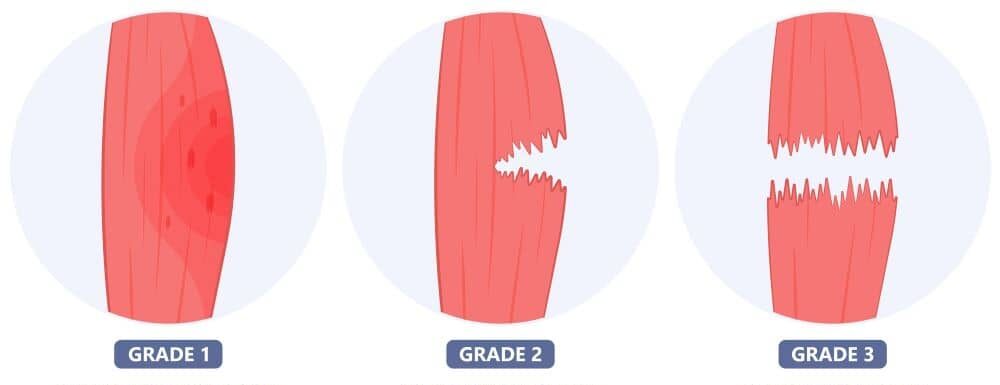How to prevent hamstring injuries
March 2ndHamstring injuries are one of the most common injuries that occur in sports and physical activities. While they can be painful and debilitating, what makes hamstring injuries even more frustrating is their tendency to recur, even after a seemingly successful recovery.
There are several reasons why hamstring injury reoccurrence is so high, including:
-
Incomplete or inadequate rehabilitation: Many athletes may return to play too soon after an injury, or may not fully complete their rehabilitation program. This can lead to weakened or imbalanced muscles, increasing the risk of re-injury.
-
Poor flexibility and muscle imbalances: Tightness or imbalances in the muscles surrounding the hamstring can put extra stress on the hamstring muscles, making them more susceptible to injury.
-
Overuse: Repeated stress on the hamstring muscles from activities like running or jumping can lead to fatigue and eventually injury. This is especially true for athletes who may be participating in high-intensity sports without proper rest and recovery.
-
Poor training techniques: Poor training techniques, such as improper running form or incorrect weightlifting form, can lead to increased stress on the hamstring muscles, increasing the risk of injury.
-
Age and previous injury: As we age, our muscles and joints become more susceptible to injury. Additionally, athletes who have previously injured their hamstrings are more likely to re-injure them.
Hamstring injury prevention screen assessments
Strength – Single leg hamstring bridge (3 sets of 20 reps each side)
The single leg hamstring bridge test is a good indicator of the strength-endurance of the hamstrings.
Exercise cues: Lying on your back. Bend your knees to 90 degrees. Dig your heels into the ground. Lower back flat, ribs down, core on. Drive hip up to the sky. Hold for 1 second at the top.
If you can’t get to 20 repetitions or you feel a significant difference between sides, this is a good indication that hamstring strengthening could help reduce your risk of injury.
Mobility – Slump test (3 sets of 10 reps each side)
The slump test is a good indicator of the mobility of the hamstrings as well as the nerves running down the back of the leg.
Exercise cues: In a seated position with thighs supported. Place your hands behind your back. Chin to chest. Slouch down, creating a C-shape in the spine. Straighten your knee and point your toes to the sky.
If you can’t get to at least 140 degrees or feel a significant difference between sides, this could indicate that improving your mobility could help reduce risk of injury.
To prevent hamstring injury reoccurrence, athletes should take several steps. These include:
-
Completing a thorough rehabilitation program: Athletes should work with a physical therapist to create and follow a rehabilitation program that focuses on strengthening the hamstring muscles and improving flexibility.
-
Maintaining good flexibility and muscle balance: Athletes should incorporate regular stretching and foam rolling into their routines to maintain flexibility and reduce muscle imbalances.
-
Proper rest and recovery: Athletes should ensure they are giving their muscles proper rest and recovery time to prevent overuse injuries.
-
Proper training techniques: Athletes should work with a coach or trainer to ensure they are using proper techniques during training and sports activities.
-
Consistency and gradual progression: Athletes should gradually progress their training and avoid sudden increases in intensity or volume to prevent overuse injuries.

Hamstring Muscle Injury Classification, Symptoms and Prognosis Guidelines:
Grade I (mild) strains affect only a limited number of fibers in the muscle. There is no decrease in strength and there is a fully active and passive range of motion. Pain and tenderness are often delayed to the next day. Prognosis: 1-3 weeks – clients will often describe their hamstring ’feels tight’ and a ‘bit sore’ when going to sprint. Often they will have felt a small ‘pull’ or ‘gradually got more sore’ but generally feels OK walking around.
Grade II (moderate) strains have nearly half of muscle fibers torn. Acute and significant pain is accompanied by swelling and a decrease in muscle strength. Prognosis: 4-6 weeks – clients will usually report feeling a pop or a sharp pull and then pain when walking the same day and the next. Usually with a Grade II injury clients are unable to play on for long after the incident. Bleeding and bruising present as the muscle tears.
Grade III (severe) strains represent the complete rupture of the muscle. This means either the tendon is separated from the muscle belly or the muscle belly is actually torn in 2 parts. Severe swelling and pain and a complete loss of function are characteristic of this type of strain. Prognosis: 8-12 weeks – clients will report they feel like they got shot in the leg and often heard an audible pop. With a Grade III injury, clients will usually struggle to bend the leg and weight bear on the first day.
These guidelines are incorporated into a hamstring injury rehabilitation plan to allow appropriate healing times and loading of the repairing tissue (muscle and fascia) to ultimately ensure the new tissue is stronger and more robust.
Overall, while hamstring injuries are common, they can be prevented with proper care and attention to detail. Athletes who take the time to properly rehab their injuries, maintain good flexibility and muscle balance, and use proper training techniques will be able to reduce their risk of hamstring injury reoccurrence and continue to perform at their best.
If you are experiencing hamstring issues or struggle with any of the assessments screens above, come in and see us for an assessment and we will build a treatment plan together to help you thoroughly rehabilitate and reduce your risk of injury. More specifically, we will assess your biomechanics, provide hands on treatments and create a tailored training program to facilitate recovery, tissue integrity and ultimately optimise your performance.
By Nick Pearse-Smith
Physiotherapist | Kinematics Strength + Rehab
Book an appointment here.
